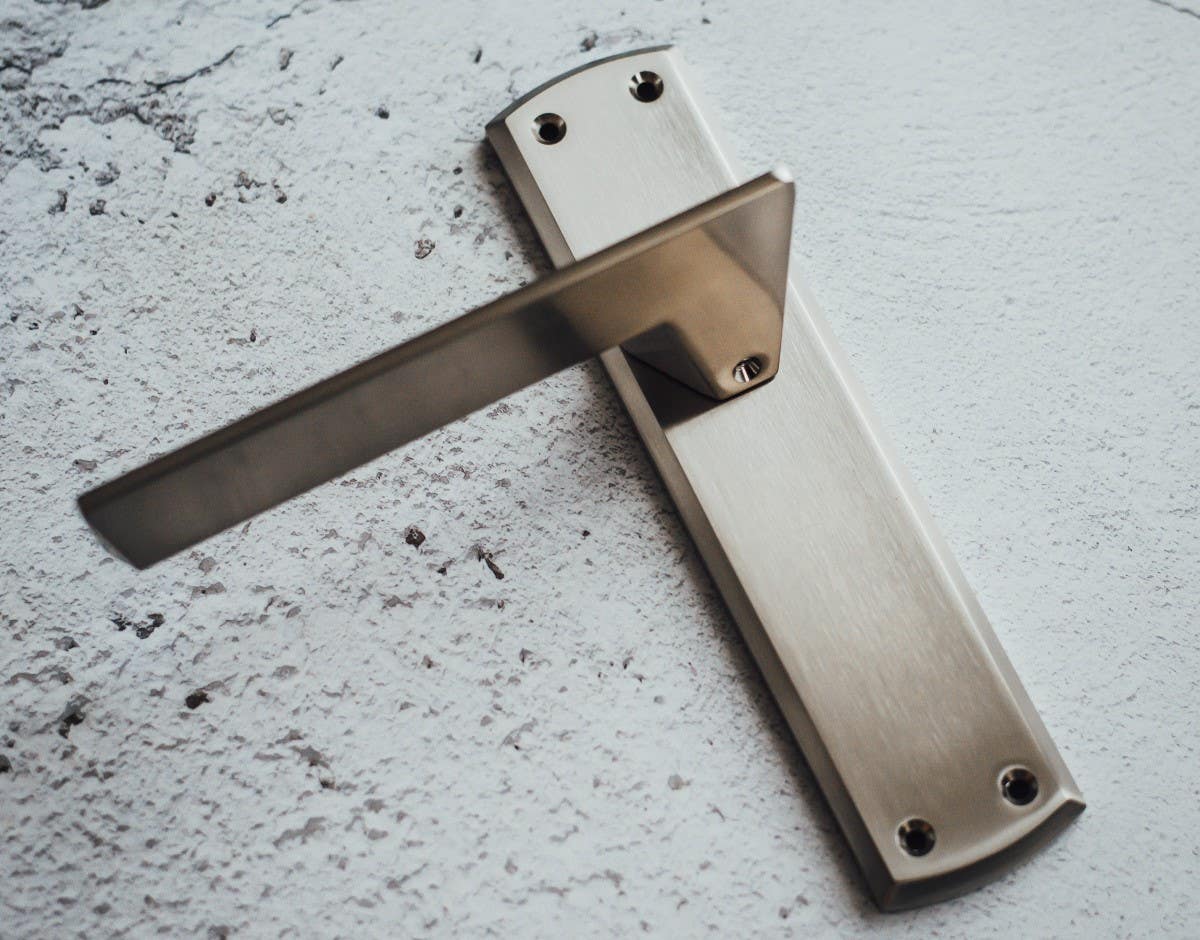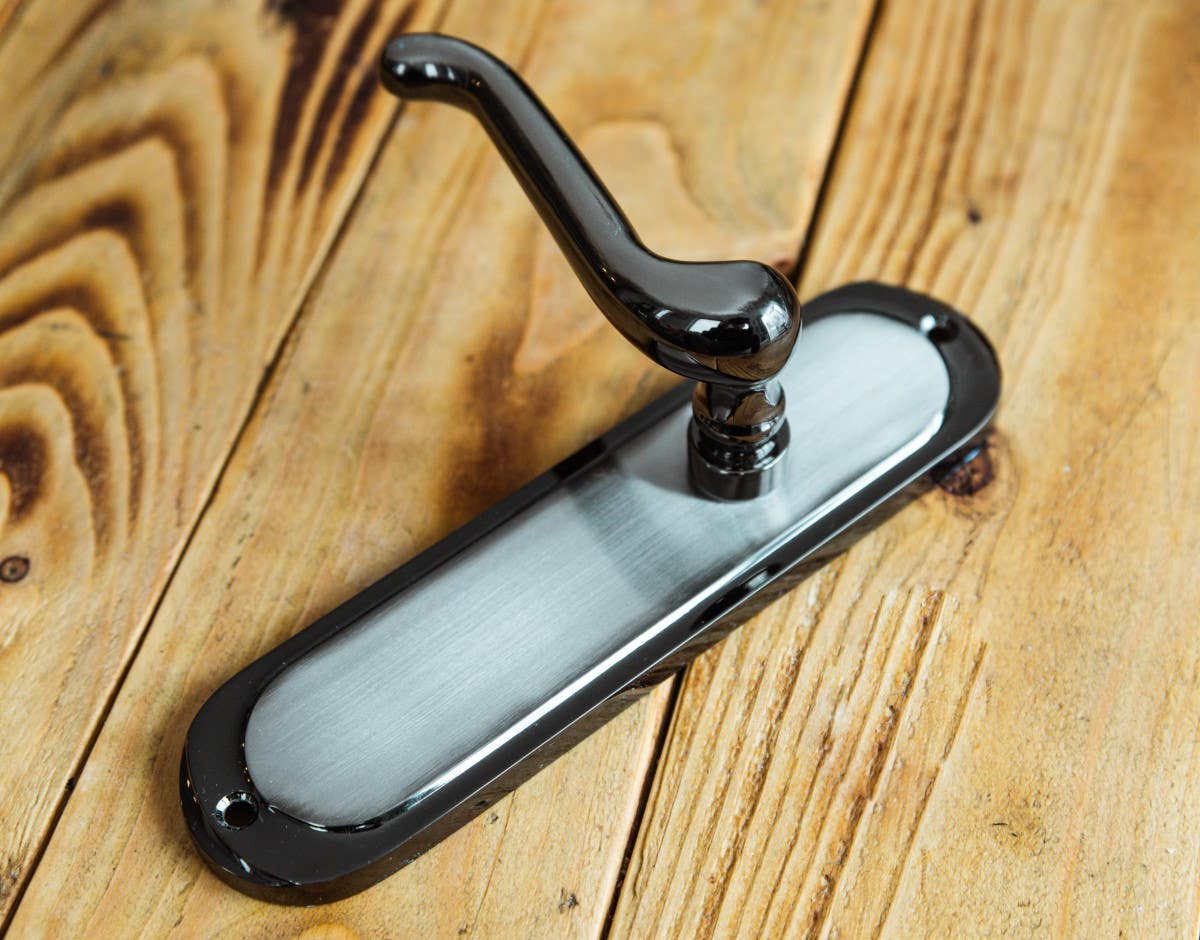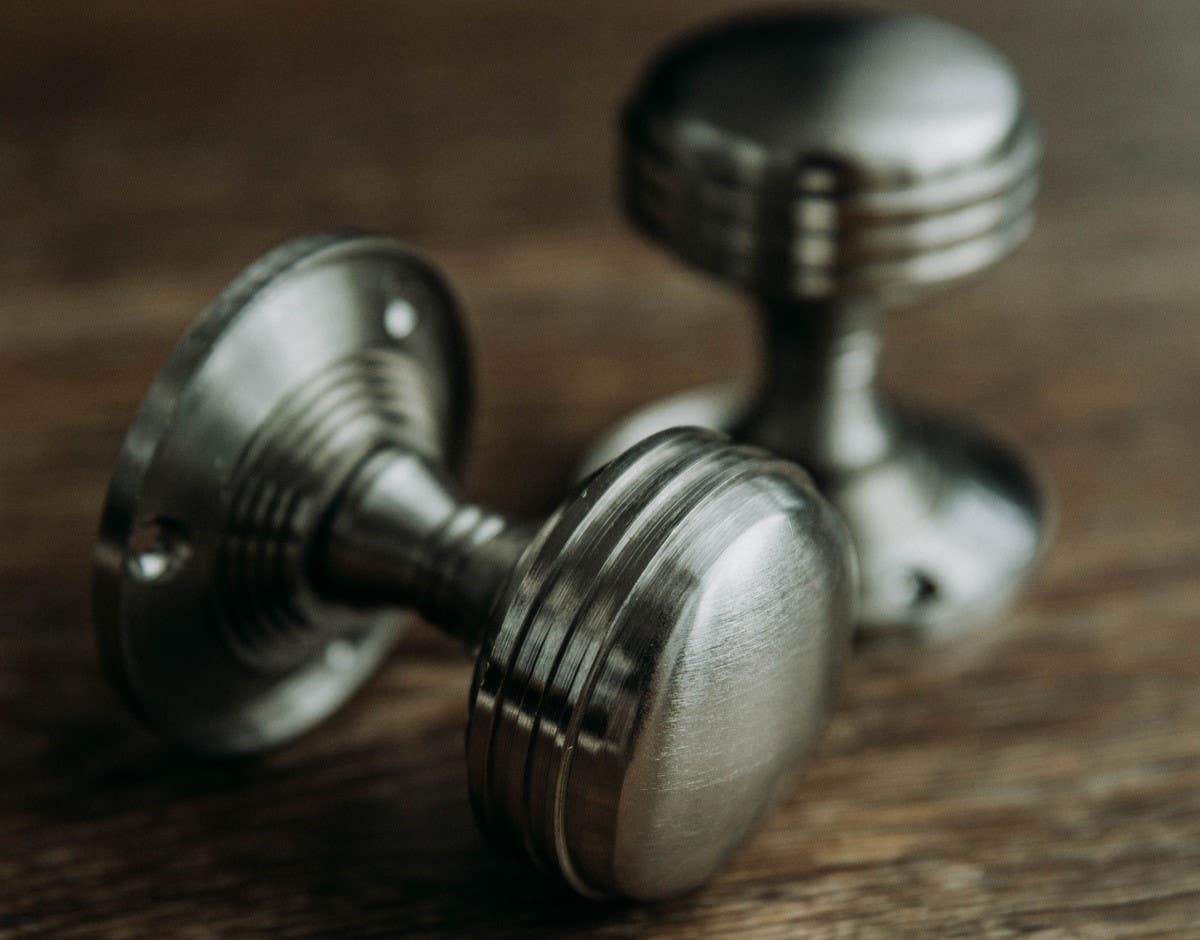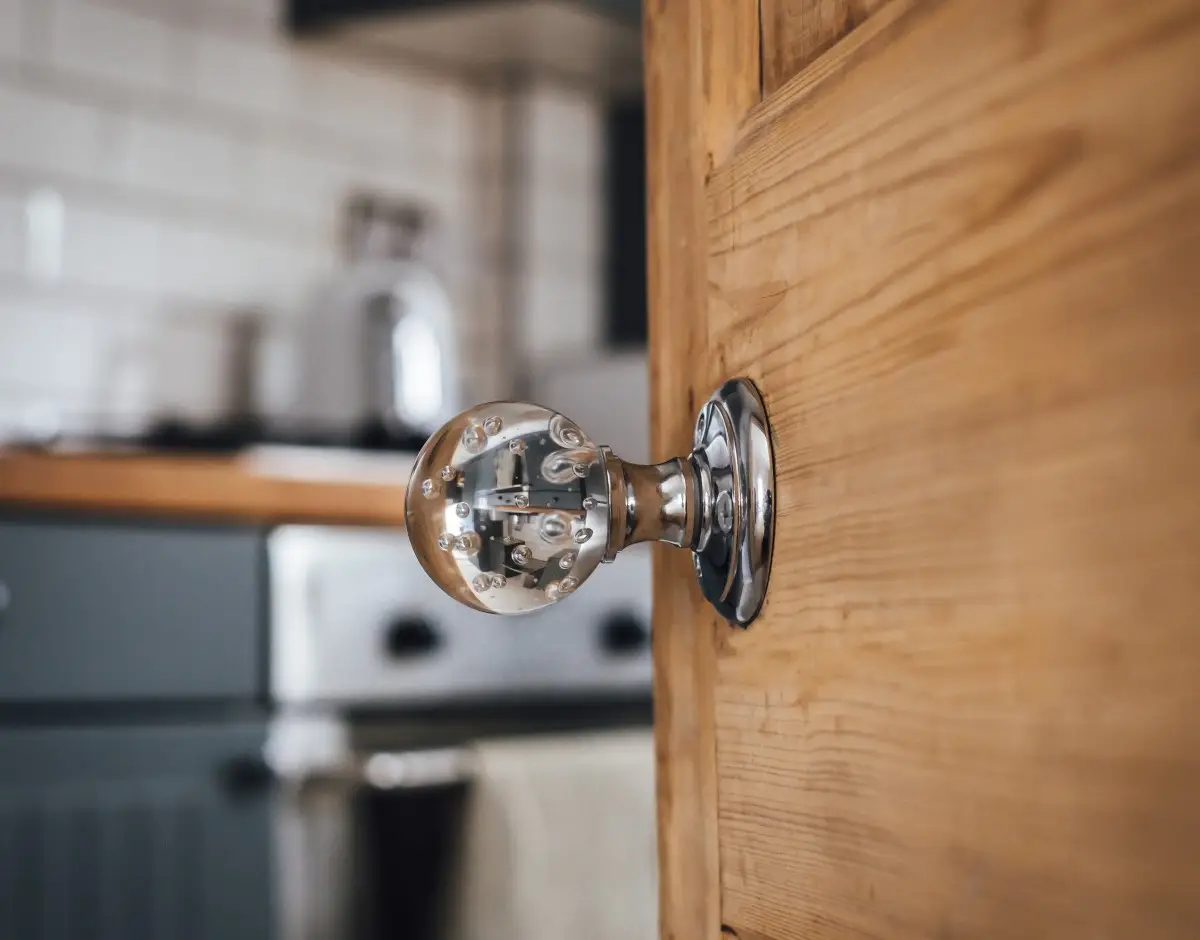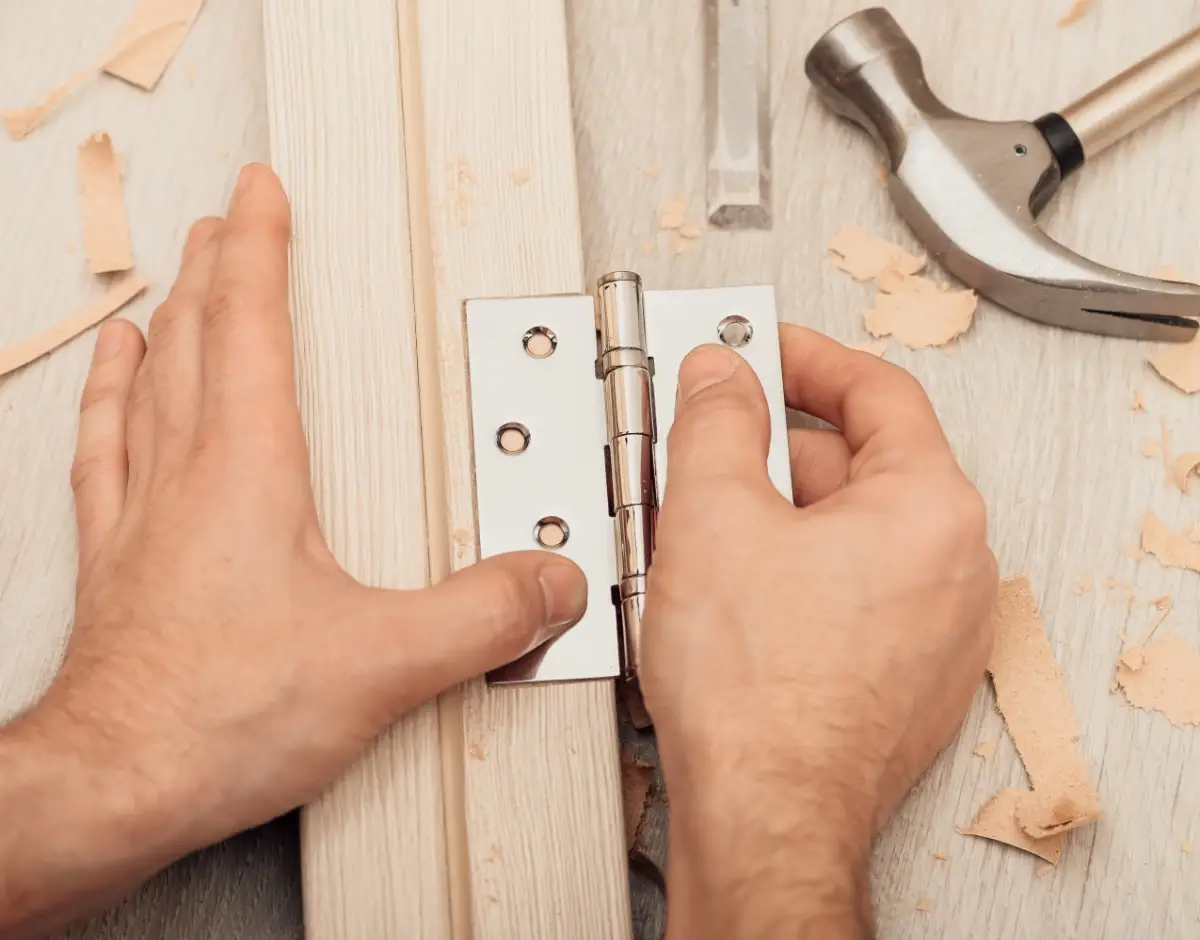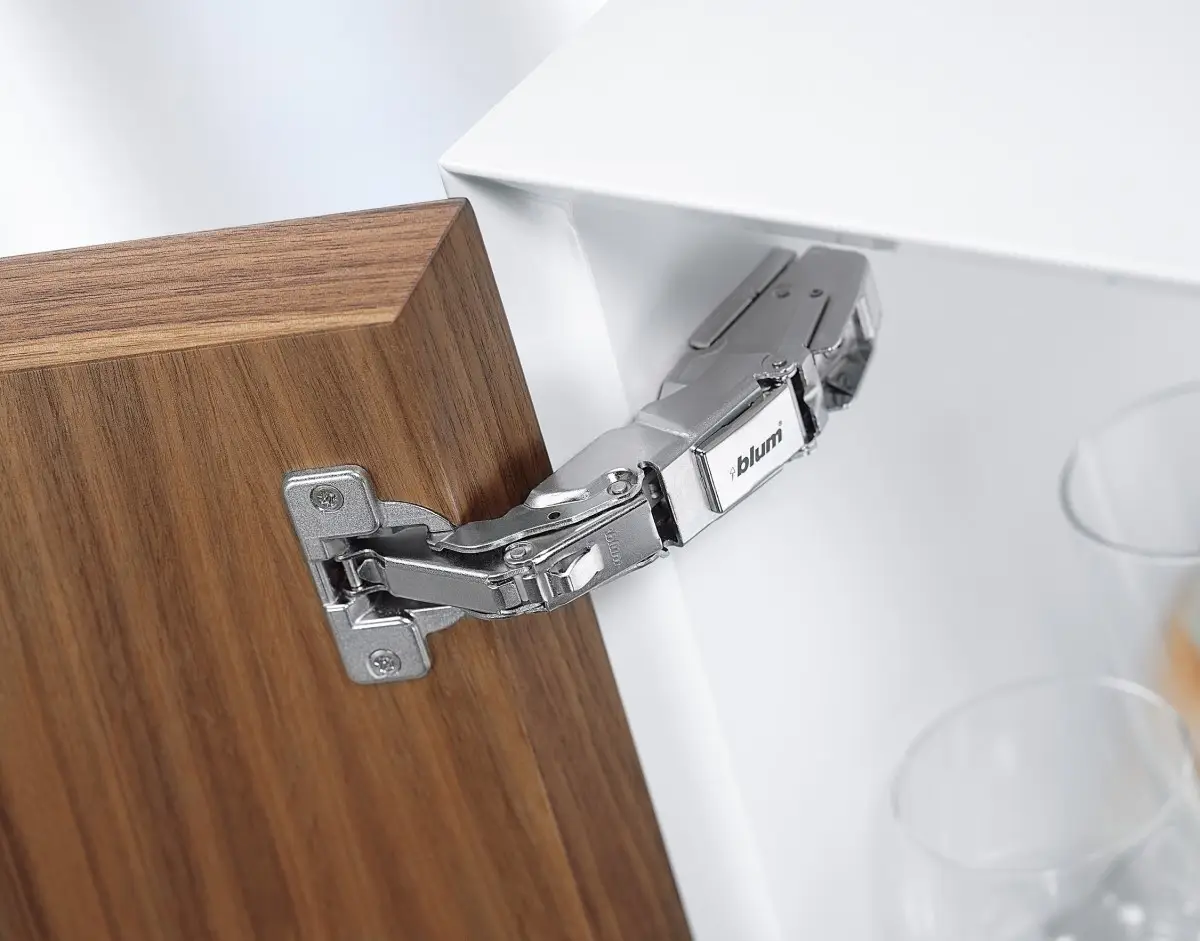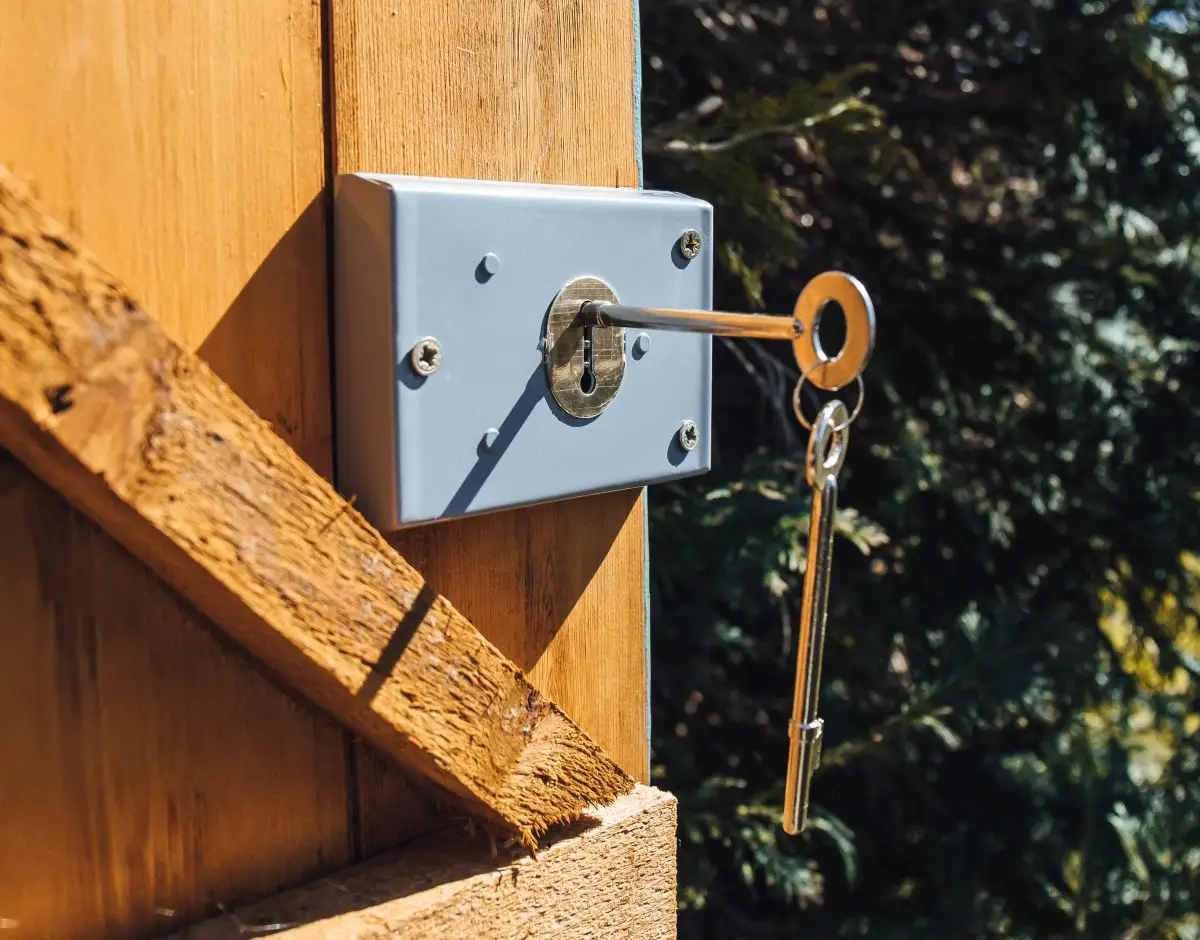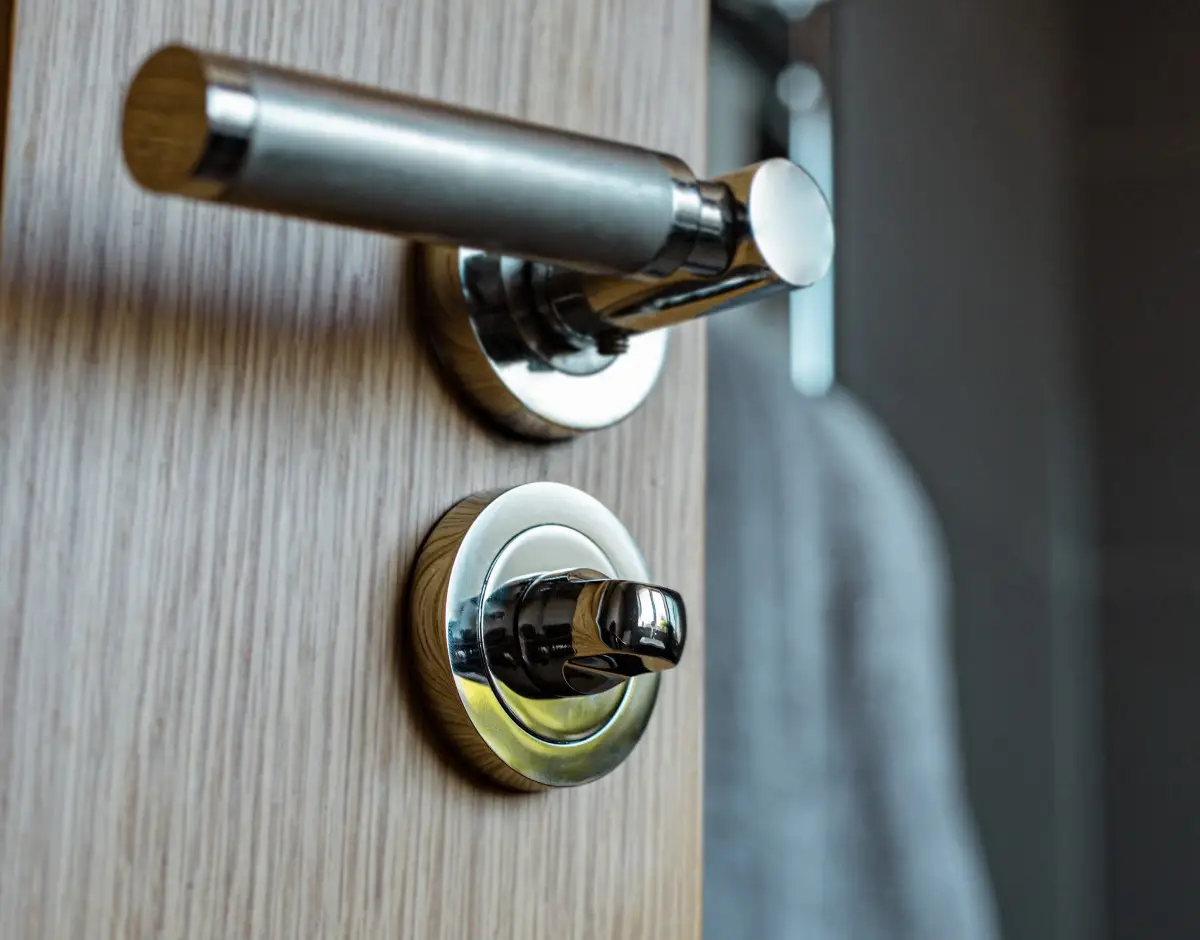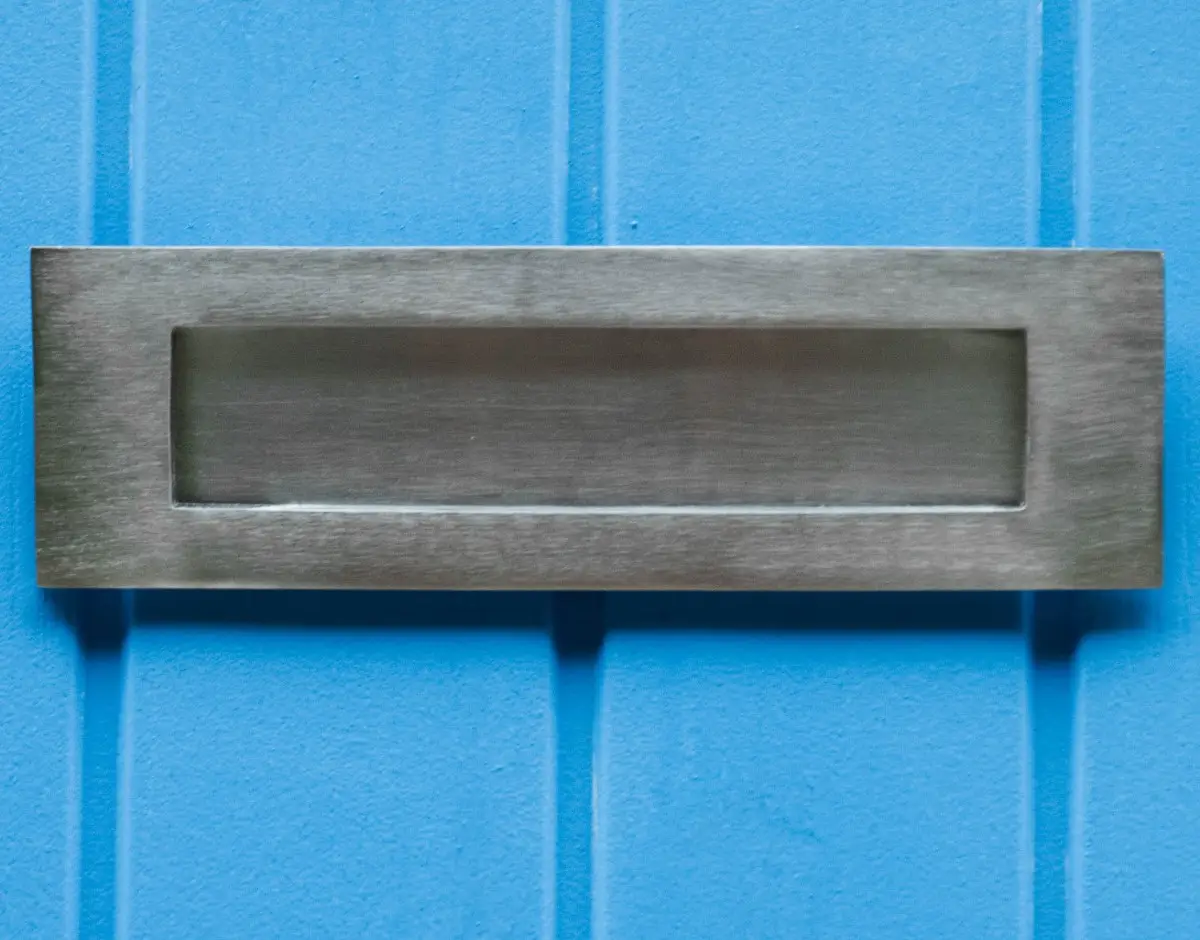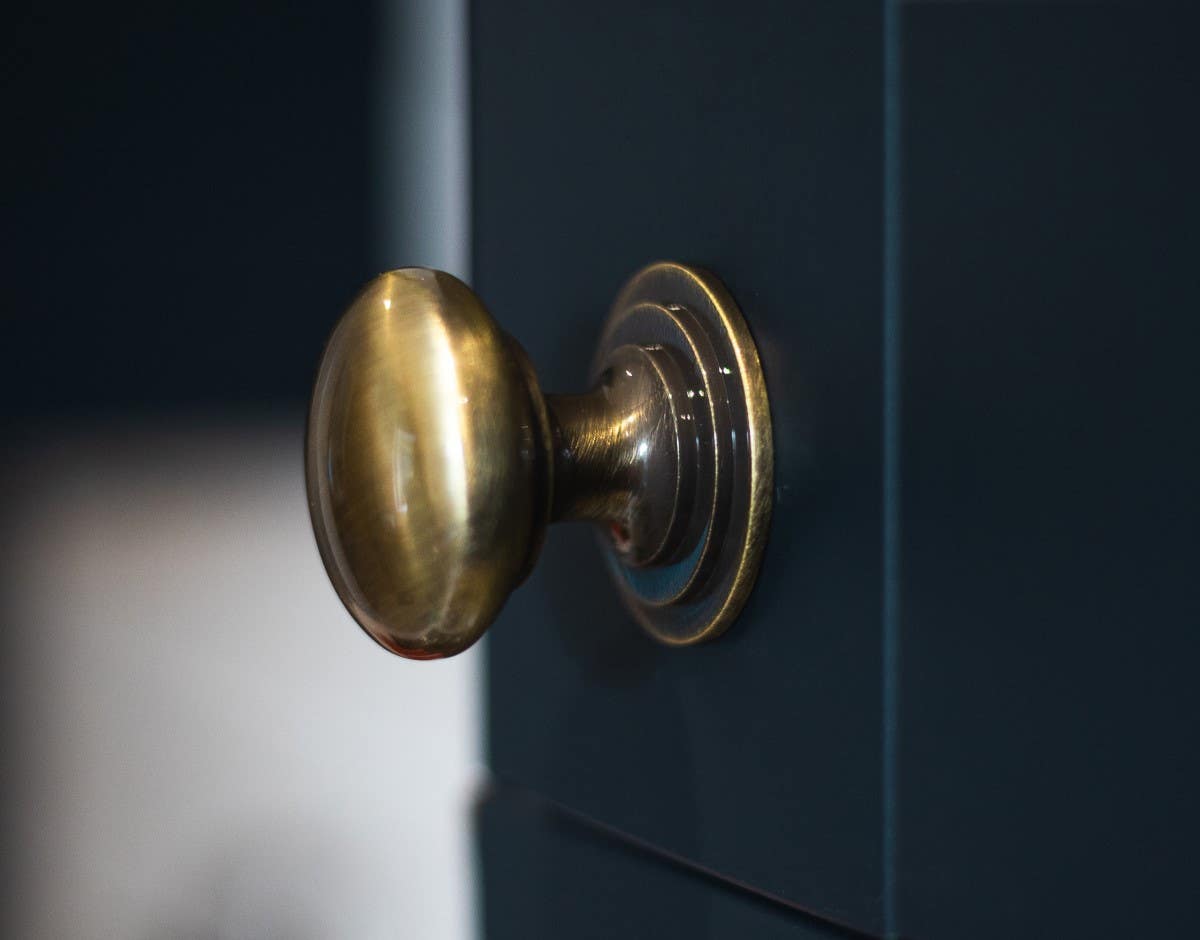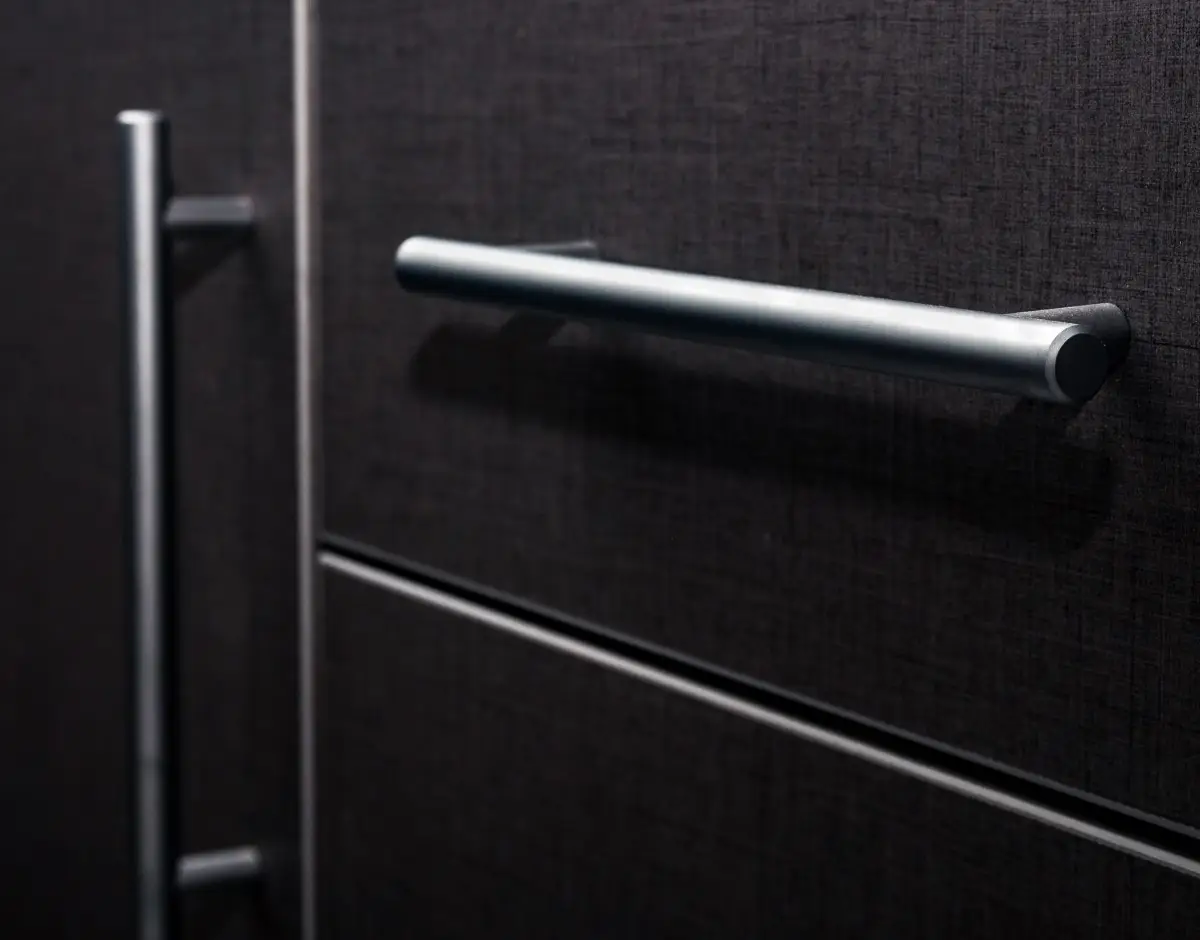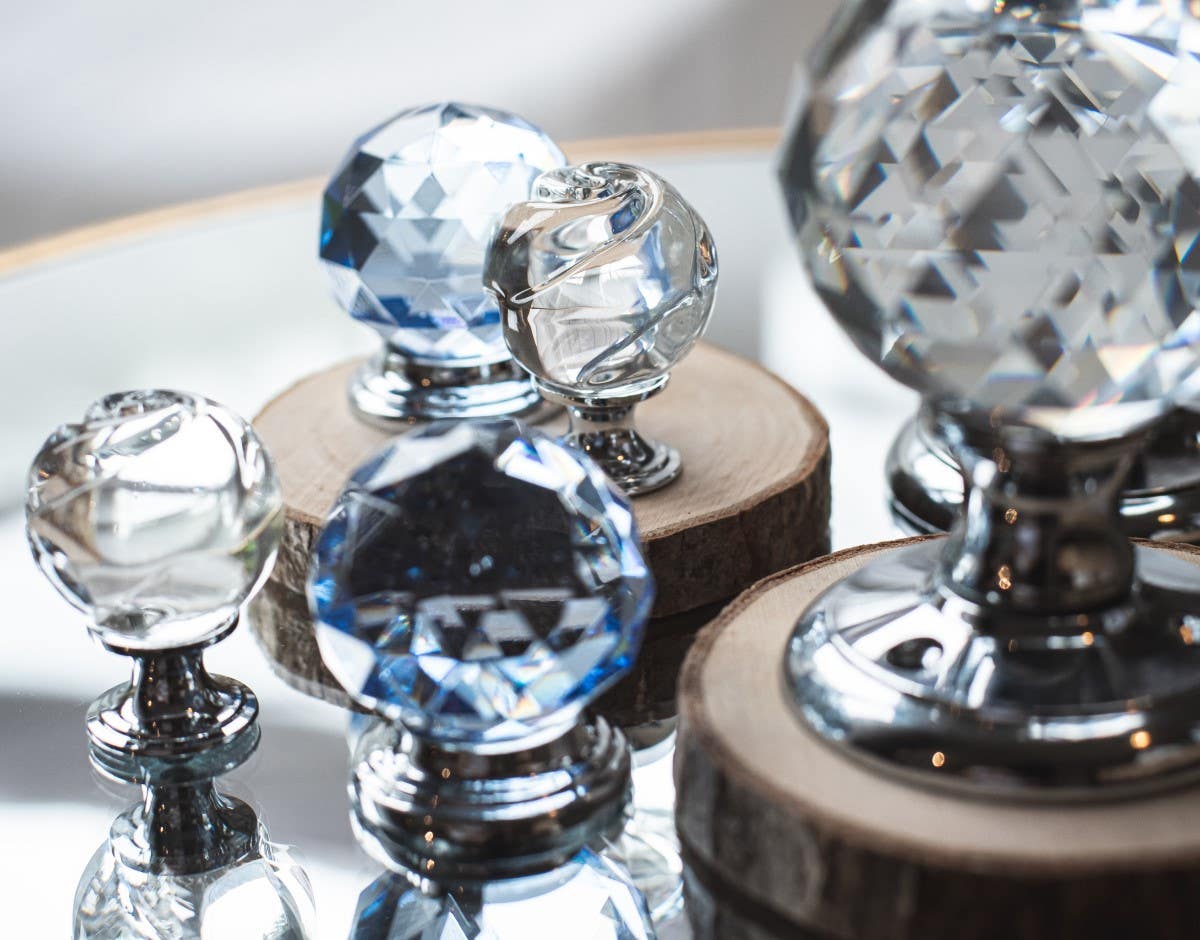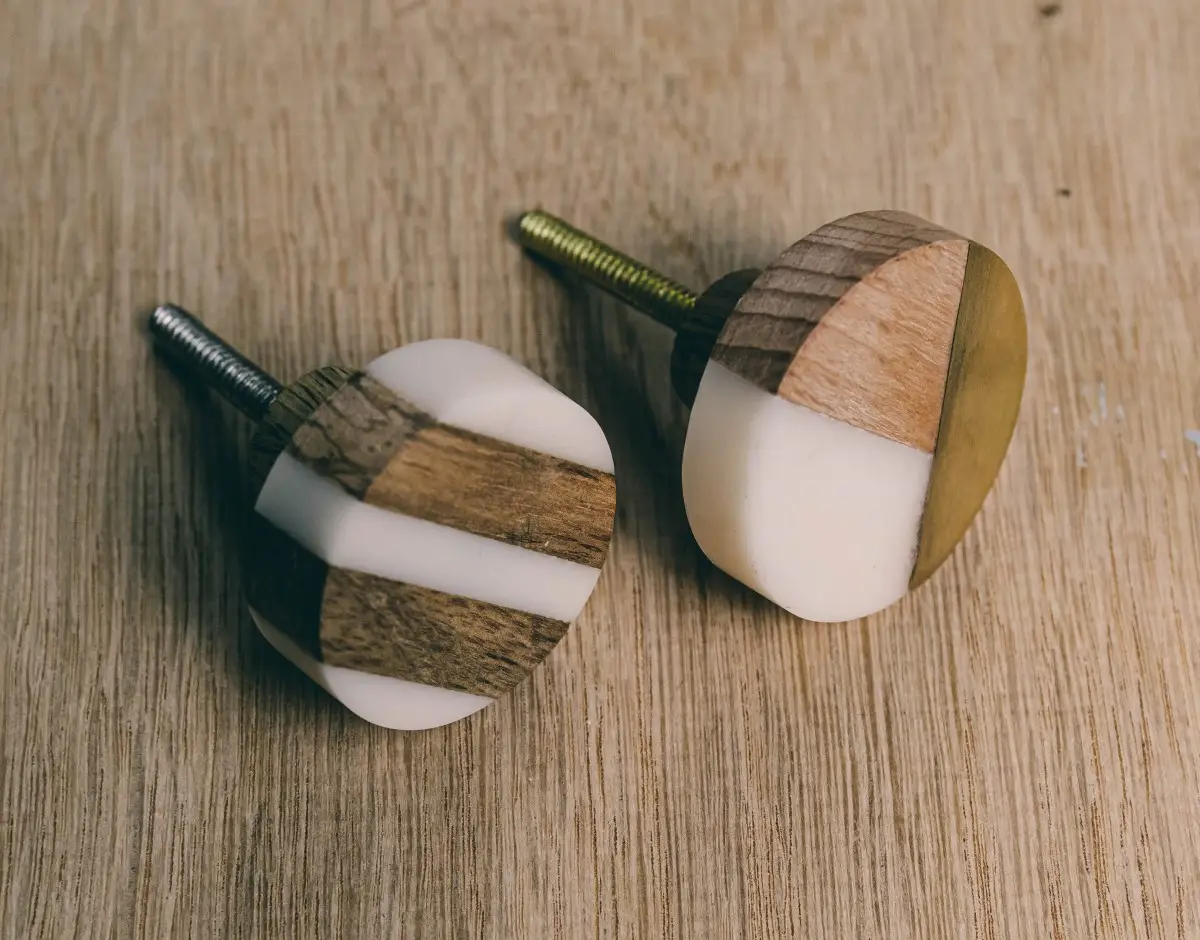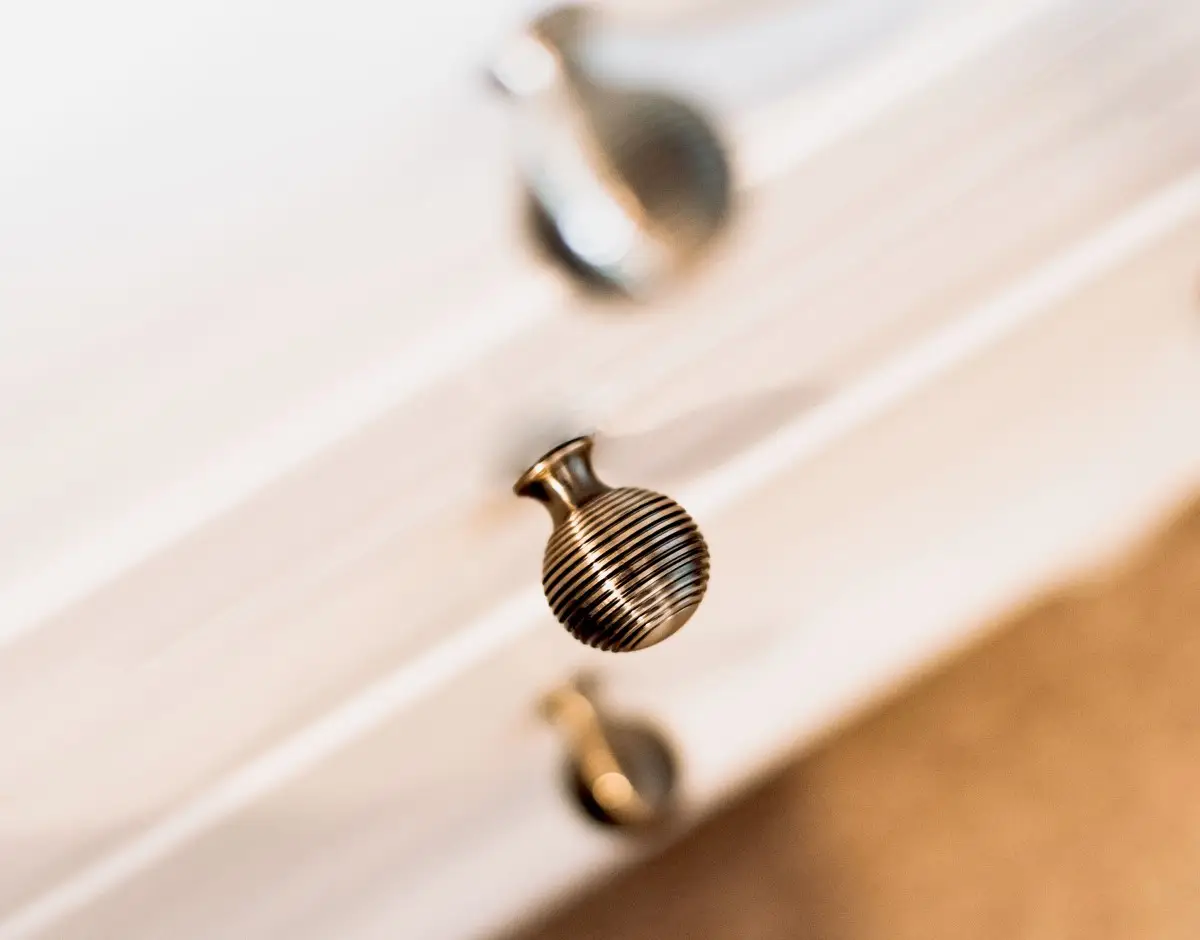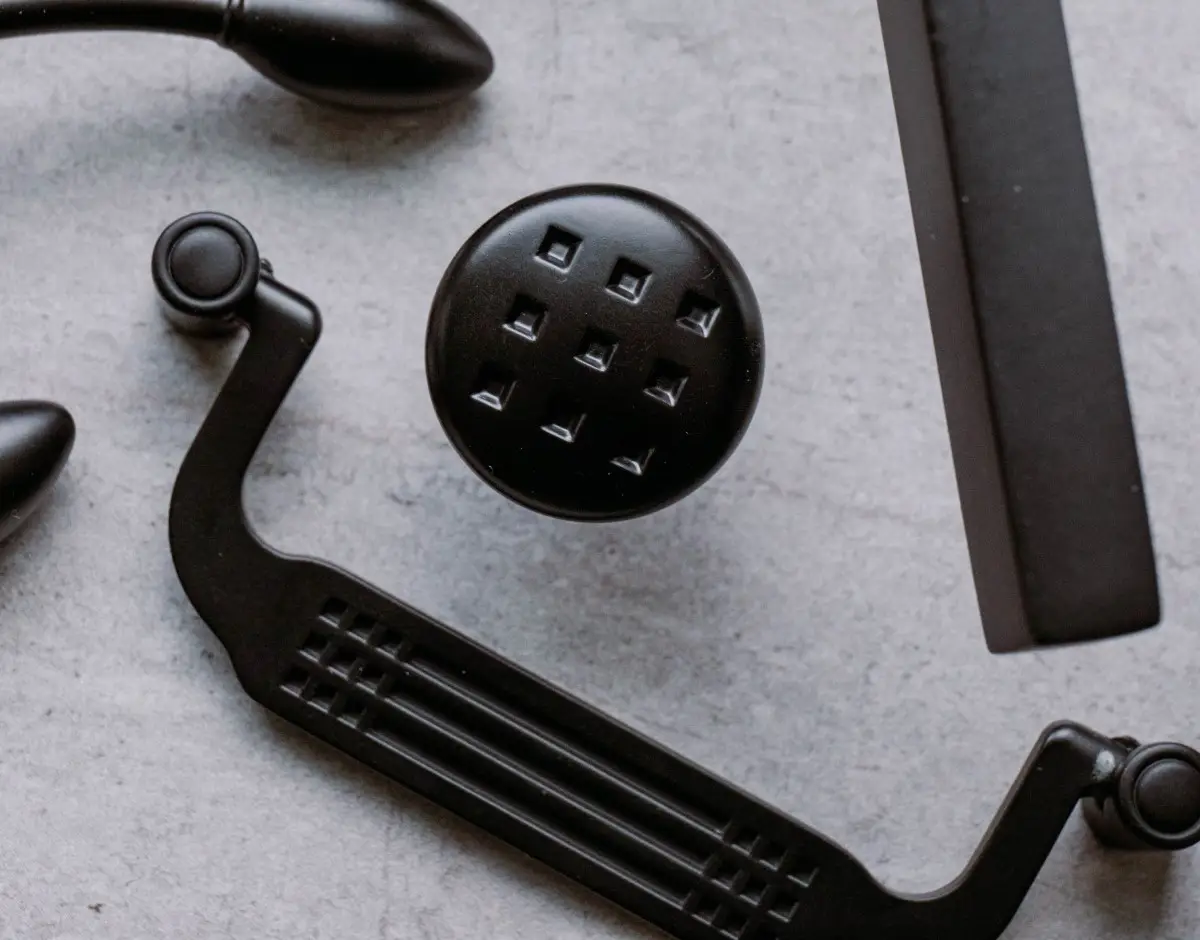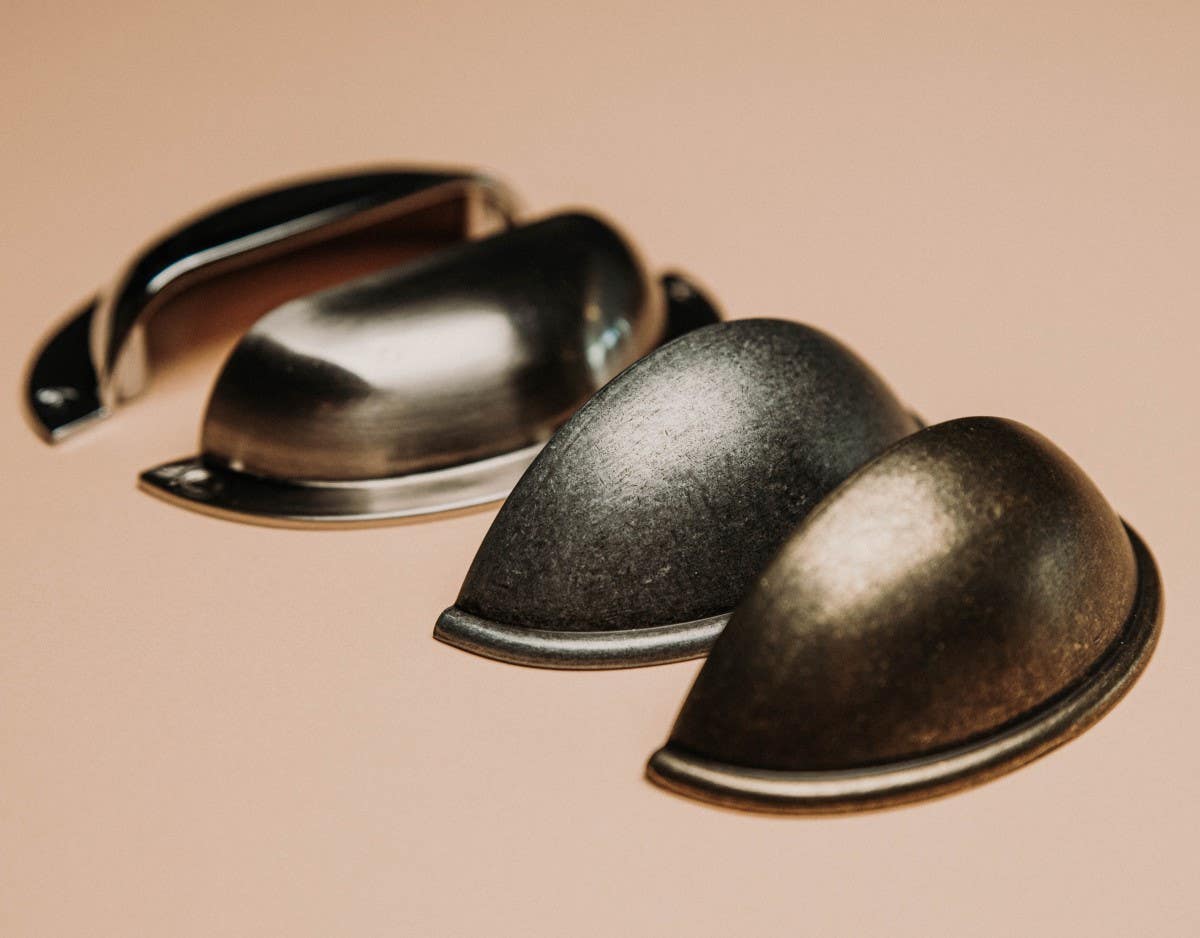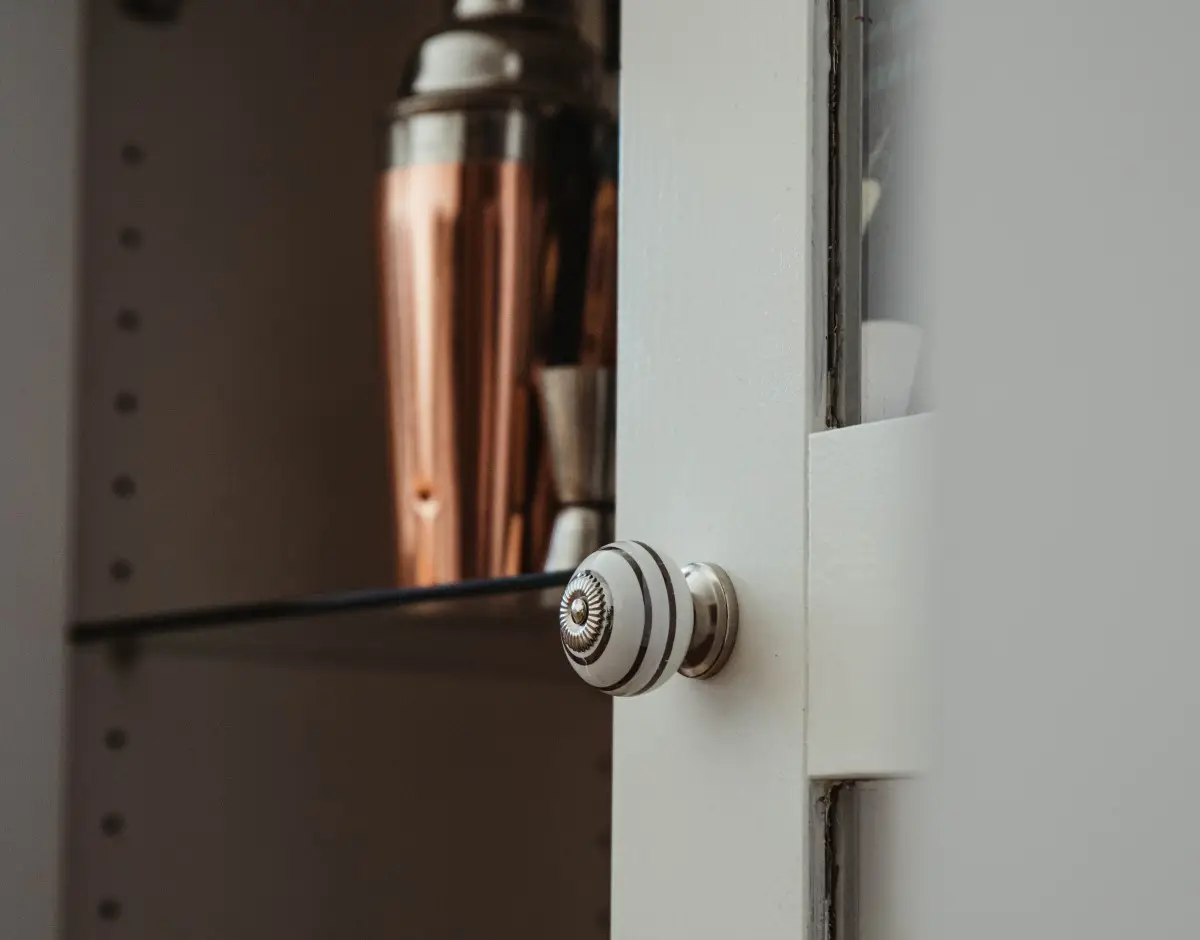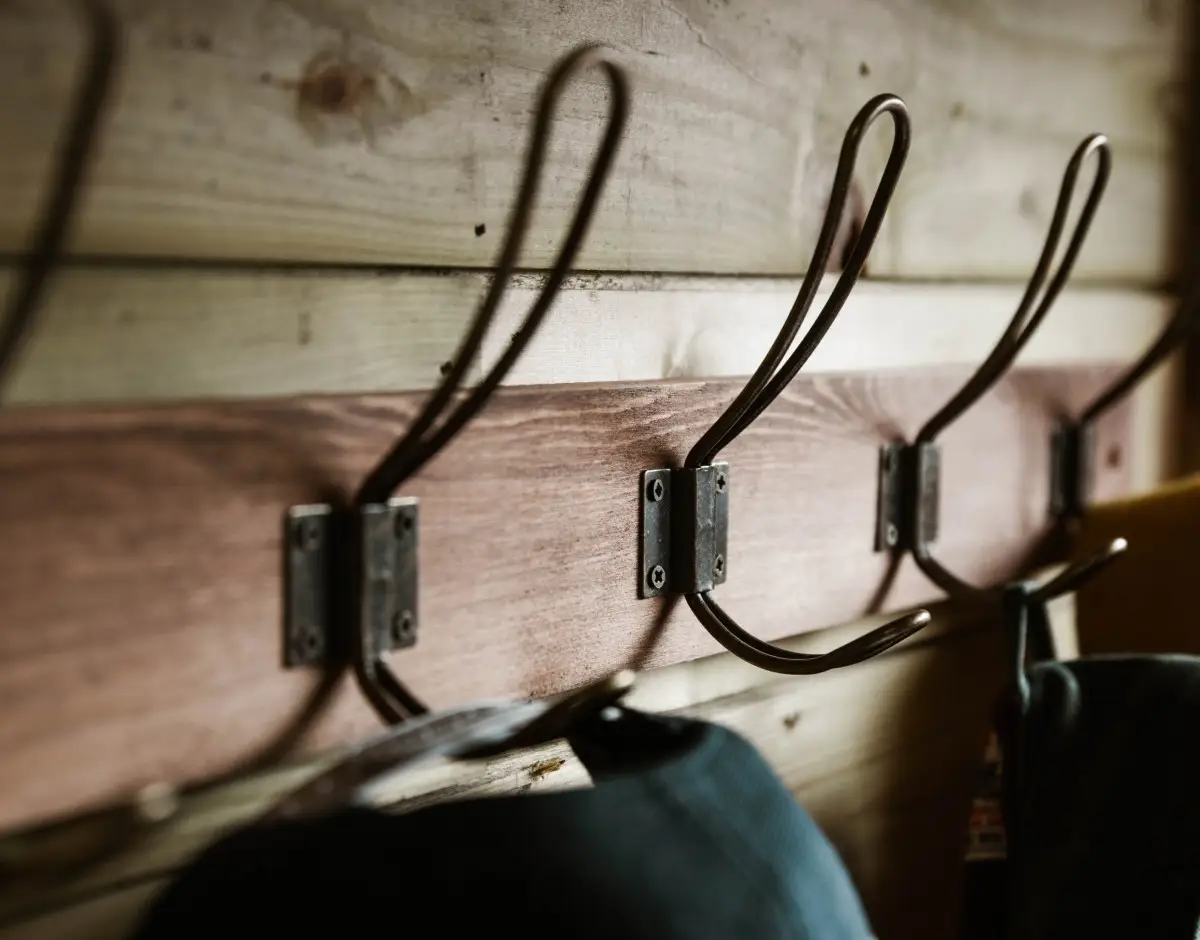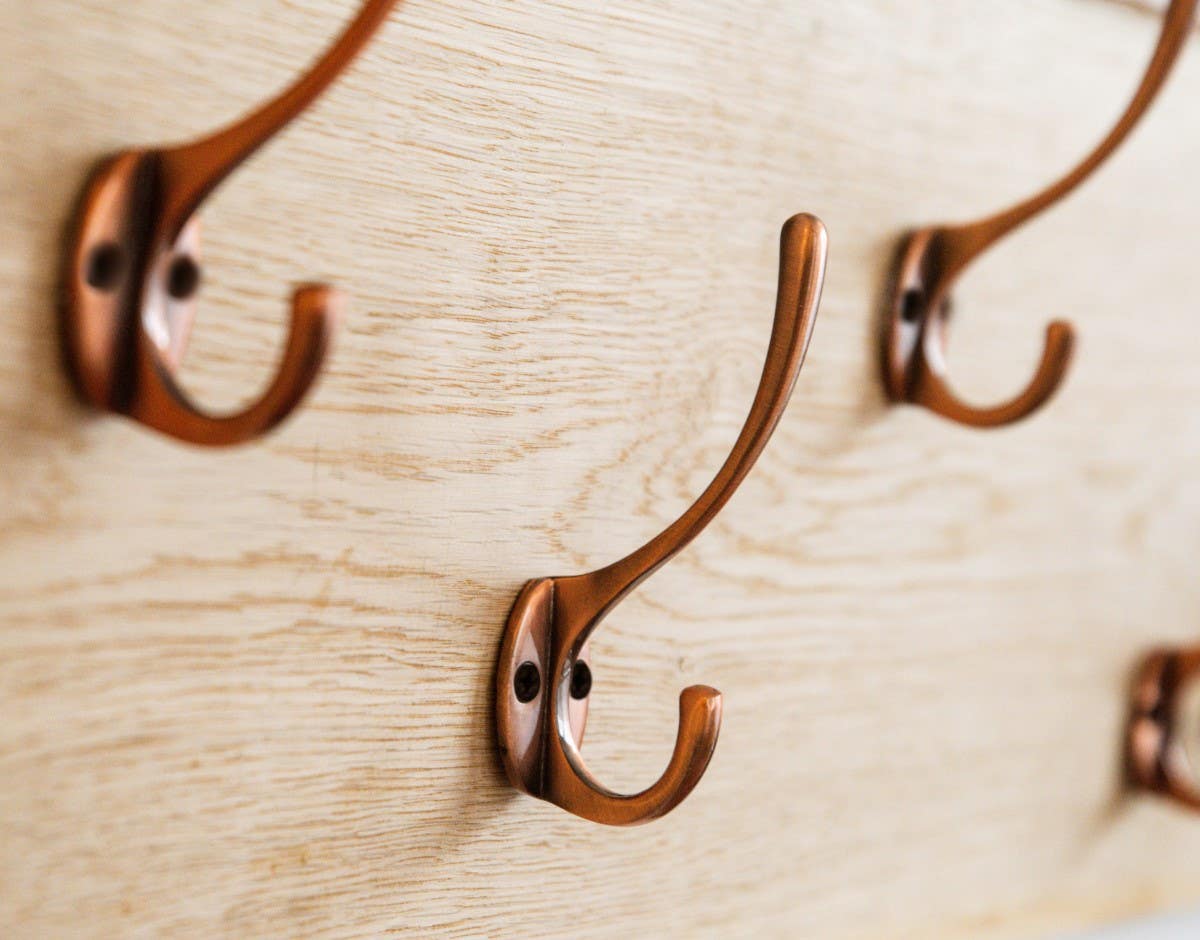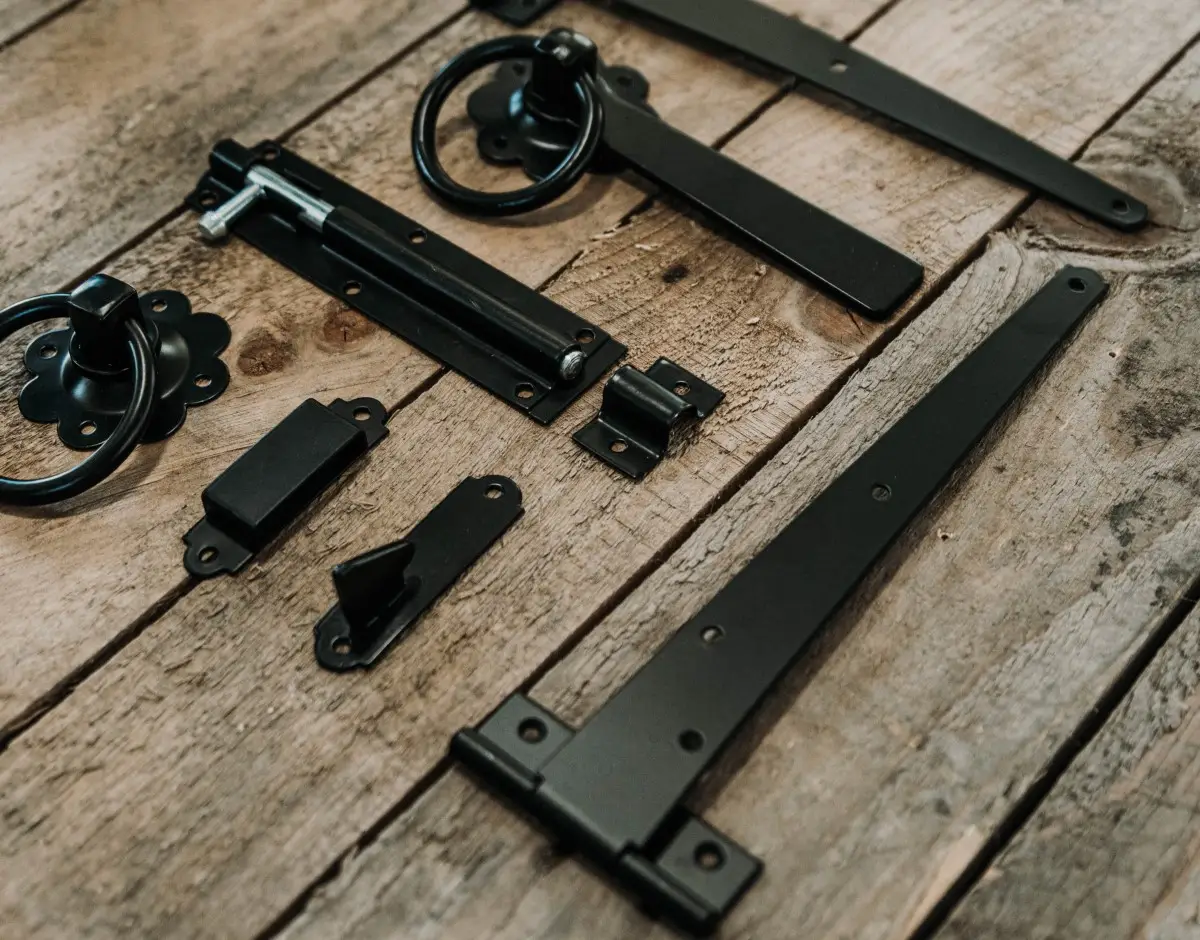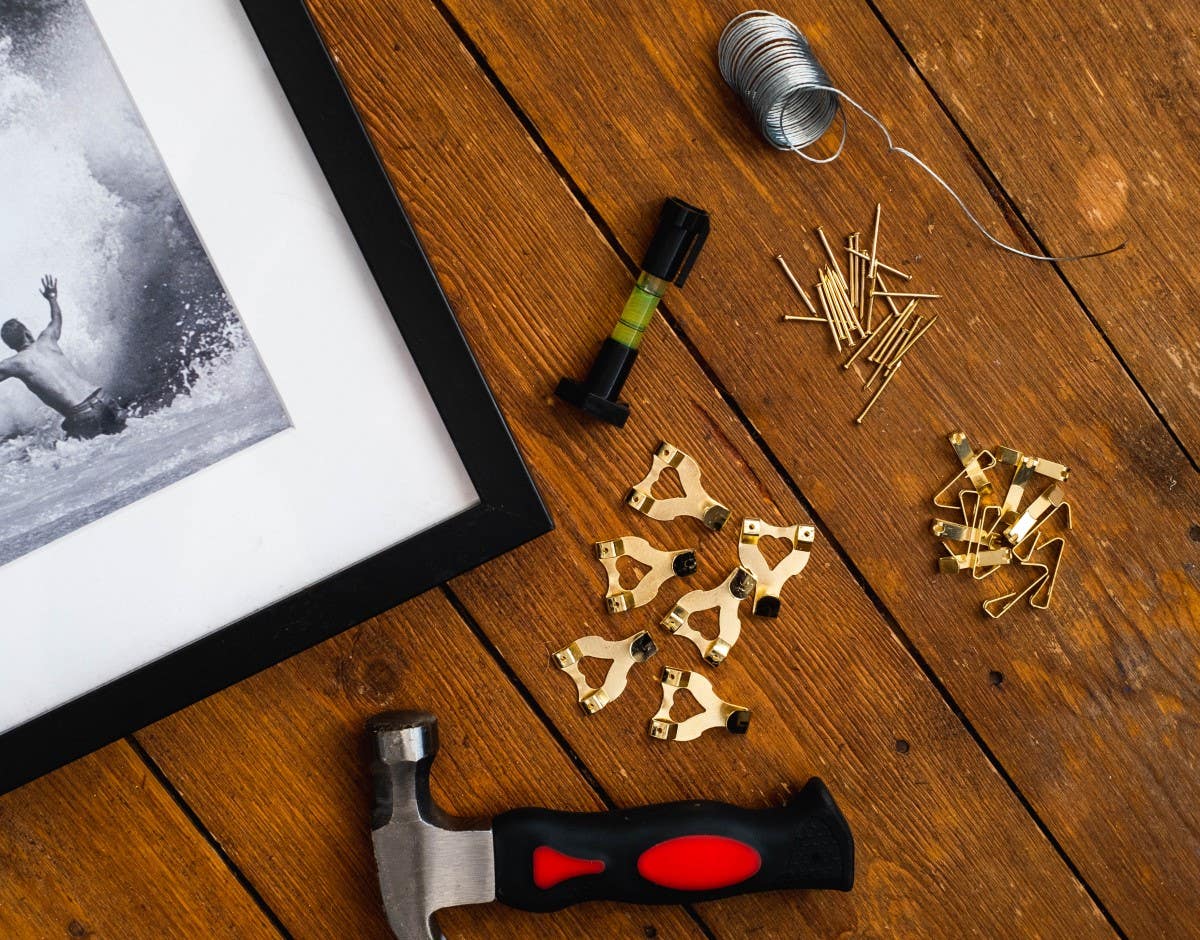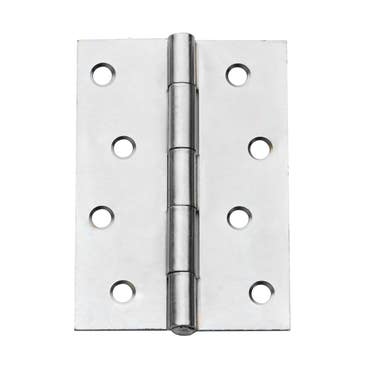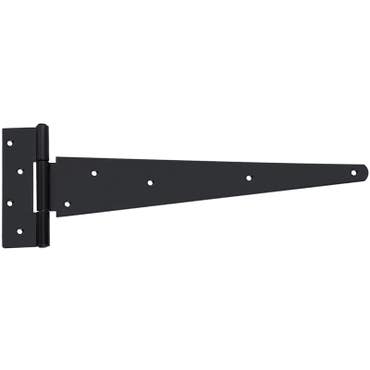Types of Hinges & How They're Used
When attempting to decide which are the best type of hinges to use for your DIY job, you'll see that there are a staggering number of designs available.
From ball bearing hinges to piano hinges and everything in between, the choice can make your head spin, but don't worry - we're here to provide some clarity.
The job starts with properly understanding the types of hinges that exist, which is what we'll be covering here in this article.
However, before we start getting into the many types of hinges there are, let's first examine a few of the factors that need to be considered.

Considering the Vertical & Horizontal Load
The truth is that there are a lot of different types of hinges for a reason - as the varying sizes and weights of doors they're used with, place different amounts of burden on them.
Aspects that determine the ideal choice of hinge include:
-
The vertical load of the door
-
The horizontal load of the door
-
Where the door's centre of gravity is located
-
How often the door is used
-
Where the hinges are situated on the door
Often problems arise when people see all hinges as being largely the same. As you'll find out by reading on, there's actually a dazzling array to choose from for interior doors, exterior doors, gates, and sheds.
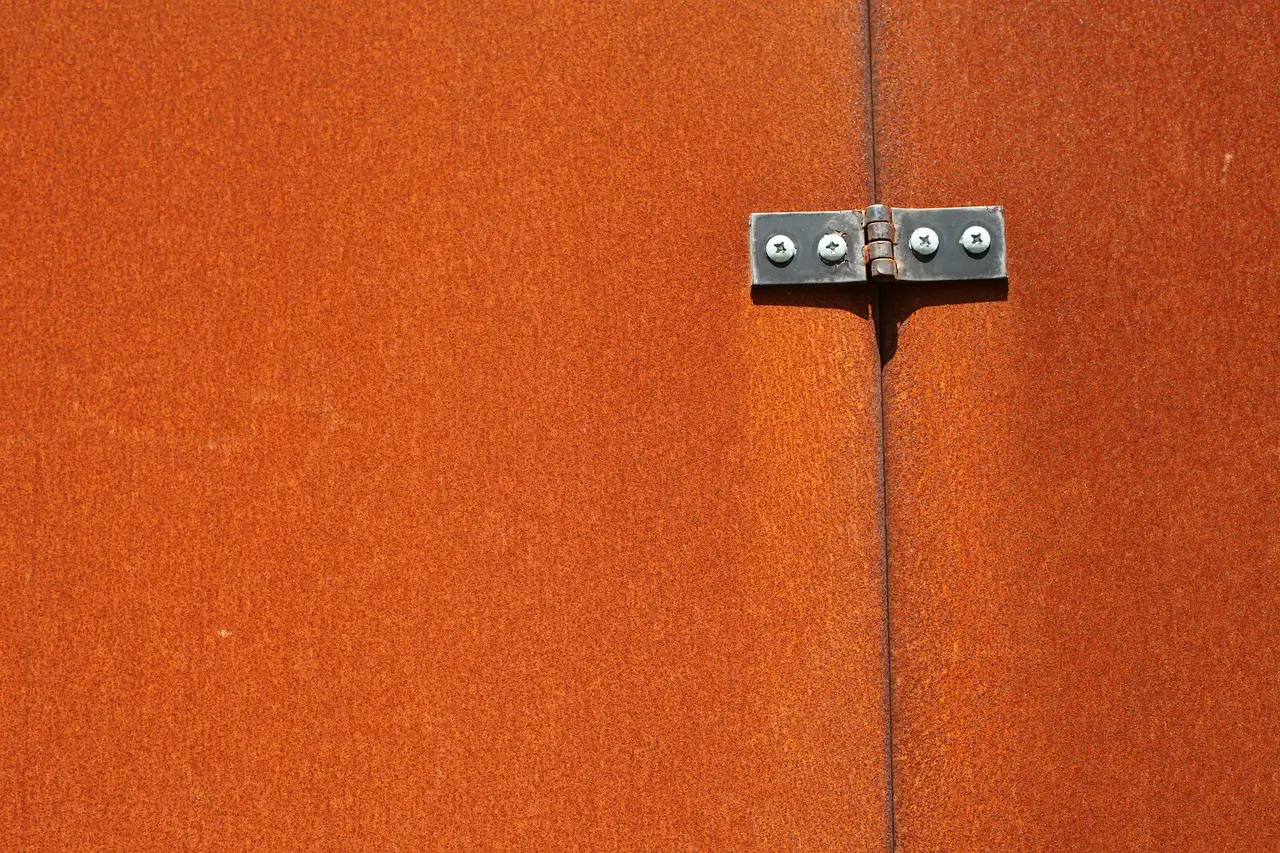
The Various Hinges On the Market
Each of the following hinges has been created to service a particular need, so let's dive in and see what we're dealing with.
The Butt Hinge
Available in a wide range of materials and finishes, butt hinges can either be concealed or visible. The butt hinge is perhaps the most widely used of all hinges.
Typically featuring two equally-sized leaves on either side, butt hinges are the type of hardware that you'll find supporting most wooden office and residential doors.
Often (but not always) the butt hinge sits flush in a recess that's cut out of the door jamb and the door, and it's one that is able to handle heavier doors compared to others available.
Rising Butt Hinges
Similar to the standard butt hinge, the rising butt hinge is hardware that differs in that the door it's attached to rides up the spiral knuckle design as it opens.
The door's weight combines with the bevel of the rising butt hinge to cause the door to close on its own, meaning has some specific use cases.
The unique design of the rising butt hinge makes it ideal for use in areas where a self-closing function is required, such as when dealing with bathroom cubicle doors.
Ball Bearing Butt Hinges

Again, we encounter another type of butt hinge in the ball bearing hinge, but this time it features hidden bearings encased in the knuckle, which offers a smoother closing action.
This is possible thanks to its clever design, as inside the ball bearing hinge, bearings help to reduce friction, allowing the door leaf to glide open or closed.
The robust construction and smooth operation of the ball bearing hinge make it ideal for heavy-duty applications such as heavy entryway doors.
Concealed Hinges

Another of the types of hinges you'll encounter on the market are concealed hinges, which are typically much lighter than your average butt hinge.
Aesthetically, these types of door hinges provide a minimalistic feel and look, and sometimes come as spring loaded hinges, as it's a design that ensures that the door stays shut.
In terms of load, this is a lightweight option that you'll usually find installed on outdoor telecomms cabinets and internal cabinet doors that need to prevent unauthorised access.
Tee Hinges

Next, we have the tee hinge (a.k.a Cross Garnet Hinge) which is usually composed of a rectangular knuckle affixed to the gate post and a tapered strap.
It's an easy hinge to identify, as it's the kind you'll typically find being used on lightweight shed doors and gates and it's available in a selection of medium & heavy-duty options.
You'll typically find that the tee-hinge either comes in a black or galvanised steel finish and will be able to cope with loads up to 50 lbs or so.
The Strap Hinge
With a similar look and feel to the tee hinge, strap hinges are characterised by their slim, elongated design that consists of two, long rectangular (or triangular) pieces and a knuckle.
Strap hinges are connected in the middle to a rotating access, which allow the strap hinge to open and close as is desired.
The strap hinge is most often found on shed doors, garage doors, cabinets and gates, with galvanised steel being the most common finish.
The Pivot Hinge

Coming completely away from the basic design of the butt hinge, we have the pivot hinge, which swings on a single axis.
The advantage of a pivot hinge is that they don't require a proper frame installation, as the door pivots instead of swinging.
This is an option that needs less clearance space and there's no real limit to where they can be used - just like regular door hinges.
The Continuous Hinge (Piano Hinge)
The continuous hinge (a.ka. the piano hinge) was first designed - perhaps unsurprisingly - to secure the lid of a piano in place.
In the modern day, however, the continuous hinge is employed as a means to distribute weight evenly and reduce stress on the door or cabinet it's attached to.
The piano hinge is the ideal option for applications where the door in question is opened or closed frequently and is prone to wear and tear.
Barrel Hinges
Moving to the next of our door hinges - the barrel hinge - we find a small, barrel-shaped piece of hardware that's usually made from solid brass.
When looking at the barrel hinge, you'll see it has a design that's nothing like the butt hinge or indeed, any of the associated products, but it's one that functions discretely.
The ideal use case for the barrel hinge is where there's a need to keep your door hinges concealed from view - something that it does rather well.
The Overlay Hinge

Used most often on interior cabinet doors, the design of the overlay hinge allows it be either partially or completely concealed.
'Overlay' is a term that's used by cabinet makers to describe doors that overlay the aperture of the cabinet to varying degrees.
This is a hinge that is only really found on cupboards or cabinets.
Offset Hinges
When there's a need for extra clearance, the door hinges best suited to the job are offset hinge products, which are also known as 'swing-clear' products.
The selling point for the offset hinge is that they allow the door to completely open (to 90 degrees), providing access to the entire width of the door frame.
The design of offset hinges and the ability to provide a larger opening means they're ideal for use on doors in hospitals and warehouses doors. Without them, a larger door would be required.

The Materials Door Hinges Are Typically Made From
In addition to deciding which style of door hinges you're going to go for, you also have to consider which materials they're made from.
The one you choose will again depend on the application, so let's take a quick look at what might sway you one way or the other when purchasing door hinges.
-
Galvanised hinges - impervious to rust, highly durable, and great looking, the galvanised steel hinge is tough enough to cope with heavy doors, as well as wear and tear.
-
Powder-coated door hinges - great for resisting corrosion, chipping, and general wear and tear, powder-coated door hinges also offer a sophisticated aesthetic.
-
Cast iron hinges - most often used for outdoor applications, the cast iron hinge is hugely durable and great-looking and is regularly found installed on sheds and garden gates.
-
Brass hinges - brass hinges, like galvanised steel and powder-coated varieties, are highly durable and offer an appealing look wherever they're installed.

-
Aluminium hinges - another popular metal for door hinges is aluminium, which is corrosion-resistant and durable, but also lightweight.

There are a number of reasons why you might choose one finish over the other, such as style and a need to match the current aesthetic.
A World of Choice Awaits You!
So, as we can see, the number of types of hinges that exist means that you can't think of them as being one and the same as it's simply not true.
If you're mounting heavy doors in an industrial environment, you're clearly going to need a different door hinge than you'd use in a residential property.
Thanks for reading. We hope that our blog has provided some clarity on the subject of door hinges, so that you can make your purchase, confident in the fact that you've got the right one.
That's it from us this time around. We'll see you again soon.

